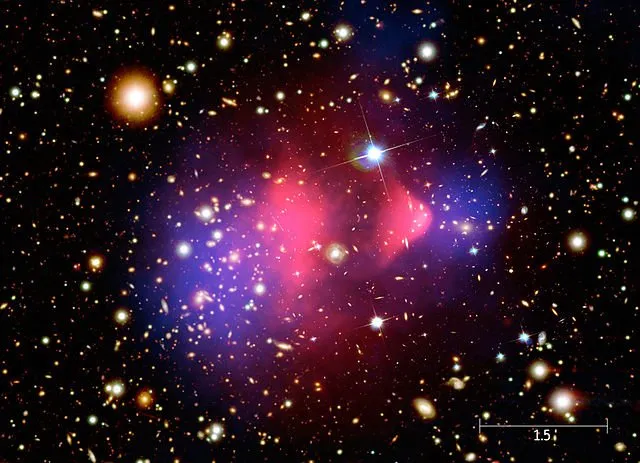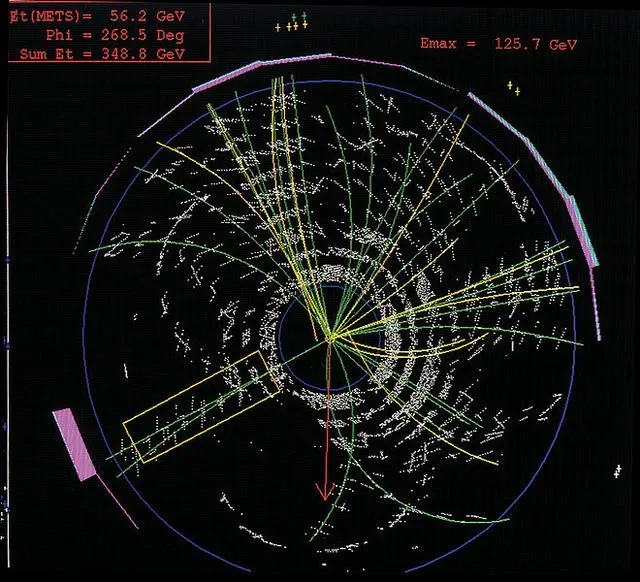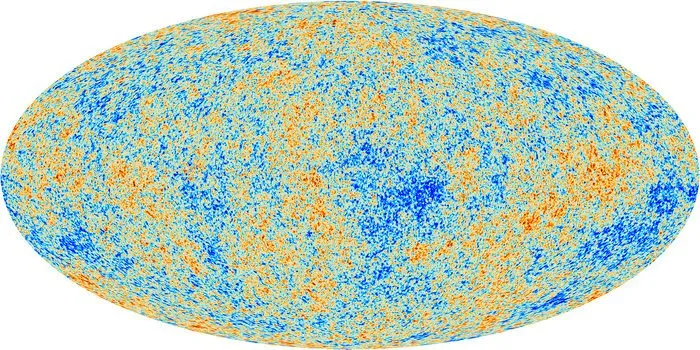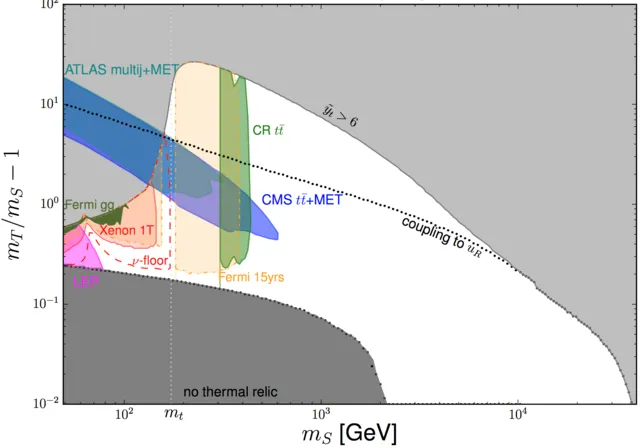Whilst dark matter is one of the most elusive stuff in our universe, the top quark (the heaviest of all known particles) is one of the favorite probes to unravel new phenomena. Therefore, the temptation to merge these two concepts is huge.
Doing so gives rise to what we call top-philic dark matter.
As a disclaimer, 'top-philic' is by no means an insult (at least in physics), and I will explain below what it exactly means.

[image credits: Maxwell Hamilton (CC BY 2.0)]
In this post, I discuss one of my recent works on dark matter, that appeared two days ago on the arxiv.
My collaborators and I have chosen to study a specific class of dark matter particle, that is... surprize surprize... top-philic.
And to describe (theoretically) how this dark matter particle behaves, we need... a top model (well…).
In practice, we have designed one of the simplest models featuring this top-philic dark matter, and we have investigated how viable it was after accounting for all existing experimental data.
TOP-PHILIC DARK MATTER
So, what is this ‘top-philic dark matter’ beast? Let’s first start with the dark matter part. Darkness comes before top models…

[image credits: NASA (public domain)]
In the early 1930s, it was observed (in this scientific article) that the motion of the galaxies was not matching the expectation from gravity and the visible stars.
In order to restore the agreement between theory and data, some invisible gravitational mass was postulated.
This is what is known as dark matter. It is dark, as invisible and thus not sensitive to electromagnetism (that is connected to light), and it is feels gravity, like normal matter.
Whilst this may sound artificial, plenty of extra evidence appeared in the meantime. We can talk about the observation of the cosmic microwave background, the large structures in the universe and gravitational lensing, and so on.
Whereas we have plenty of indirect proofs of different nature, there is so far no direct observation of dark matter (even if we try hard). This is not so dramatic for the moment, as there exist many options for dark matter to actually evade our tests.
Now let us move on with the top quark.

[image credits: Fermilab (public domain)]
I will not provide a full lecture on the Standard Model of particle physics, which describes how all the elementary particles live, drink and dance. For this, please see here.
I will instead recall that atoms are made of electrons, protons and neutrons, and that protons and neutrons are made of quarks.
Although two different quarks would have been enough, Nature was funky enough to allow for six of them.
The heaviest of all quarks is the top quark, that is also the heaviest fundamental particle.
The important point is that by virtue of its large mass, the top quark is widely considered as connected to new phenomena (that includes dark matter).
THE DARK MATTER RELIC ABUNDANCE
As stated in the beginning of this post, my collaborators and I coined a very simple model describing top-philic dark matter. But is it viable with respect to data?

[image credits: ESA (public domain)]
In its early days, our universe could be seen as a cosmic soup in which particles (including dark matter) were created (from other particles) and annihilated (into other particles) in equal amounts.
With its expansion and cooling down, there however exists a moment at which our universe was not hot enough to yield dark matter creation.
There also exists another moment at which the universe has expanded too much for dark matter particles to find each other and annihilate.
As a consequence, any dark matter particle present at this last time is still there today. This is what we call the relic density of dark matter.
By investigating the cosmic microwave background (the above picture), it is possible to derive the relic density from data. Similarly, we can make predictions for the relic density in the context of our top-philic dark matter model and therefore constrain the model.
DARK MATTER DETECTION
There is a plethora of dark matter experiments on Earth, trying (so far unsuccessfully) to detect the dark side. We must ensure that our model does not predict any signal that should have already been observed.
In direct dark matter detection experiments, one tries to measure the recoil of an atomic nucleus hit by a dark matter particle. Whist these events are very rare as dark matter very weakly interacts, one usually expects to see some of them assuming typical dark matter models.

[image credits: NASA (public domain)]
In indirect dark matter experiments, one studies cosmic rays to unravel any potential signal originating from the annihilation of dark matter.
One option consists of looking for spheroidal dwarf galaxies, a class of galaxies that contain a lot of dark matter.
The latter could indeed be connected to specific cosmic ray signals to be observed on Earth.
PRODUCING DARK MATTER AT COLLIDERS

[image credits: CERN]
One can also search for dark matter at particle accelerators, like the Large Hadron Collider at CERN.
Whilst dark matter is invisible, one can actually ‘observe’ it (note the quotes).
The key point consists in using the conservation of the energy (and the momentum) to reconstruct what is invisible.
First, one can produce invisible dark matter together with some highly energetic visible object, and study the properties of the latter to get information on dark matter.
Second, one can directly produce the mediator connecting dark matter to the top quark. This mediator is typically unstable, and decays into visible particles and invisible dark matter. Once again, one gets information on the invisible by studying the visible stuff.
SUMMARY AND TAKE HOME MESSAGE

[image credits: Inspire]
In this article, we have studied one of the simplest model of dark matter in the case where it is connected to the heaviest of all known particles, the top quark.
We have verified that the right relic abundance of dark matter could be accommodated, and that no signal observable in direct and indirect dark matter detection and collider experiments was predicted.
The findings are summarized in the figure, the white zone being allowed by all data.
We thus still have a long way to go before killing the model!
In order to understand what dark matter is, we need to search for it in all possible ways. This is what we have done here, for a specific class of models.
Once again, some stupid stuff is hidden in this post… Can you find it? And I don't talk about the title of the post that is very serious.
STEEMSTEM
SteemSTEM is a community-driven project that now runs on Steem for more than 1.5 year. We seek to build a community of science lovers and to make the Steem blockchain a better place for Science Technology Engineering and Mathematics (STEM).
More information can be found on the @steemstem blog, on our discord server and in our last project report. Please also have a look on this post for what concerns the building of our community.